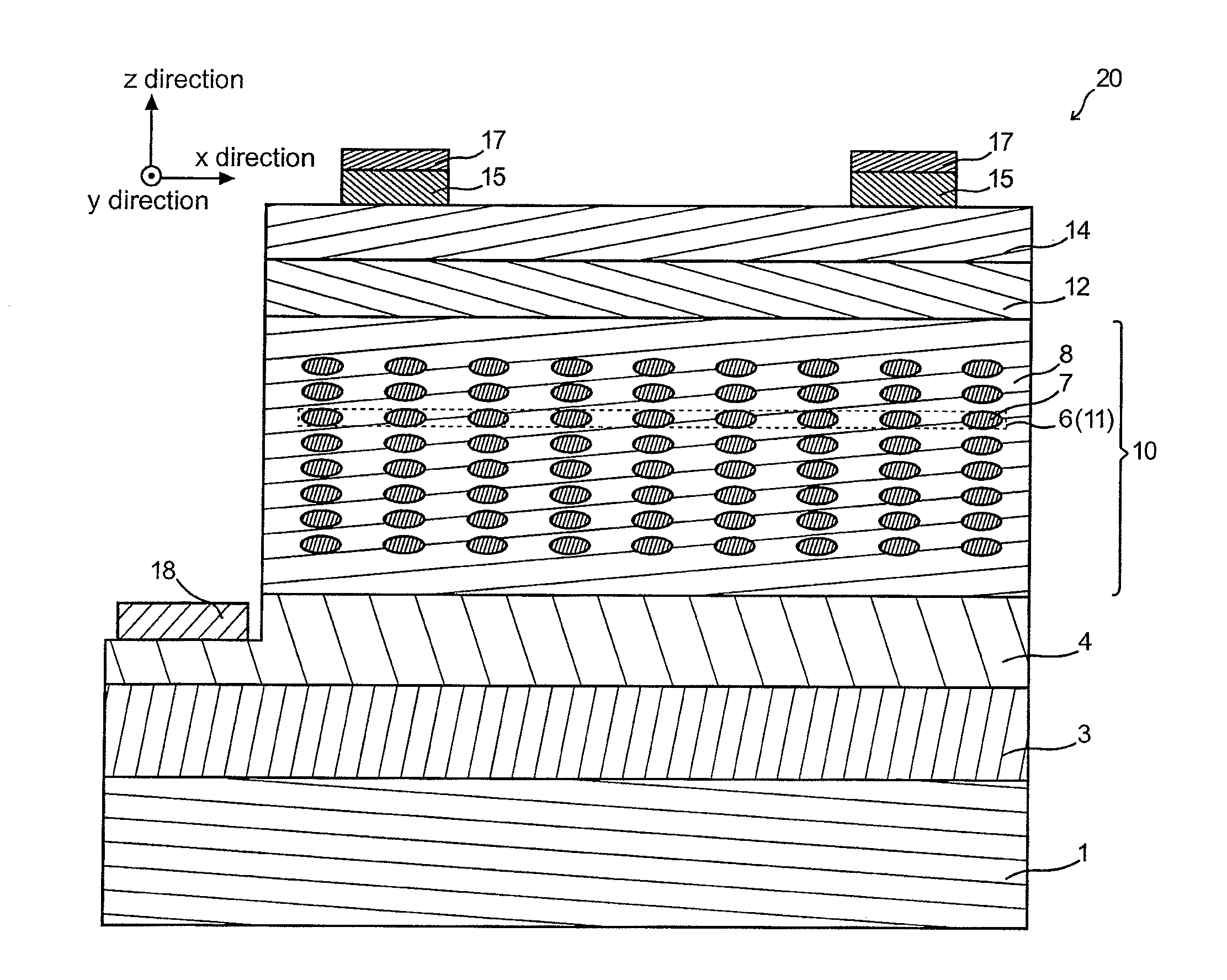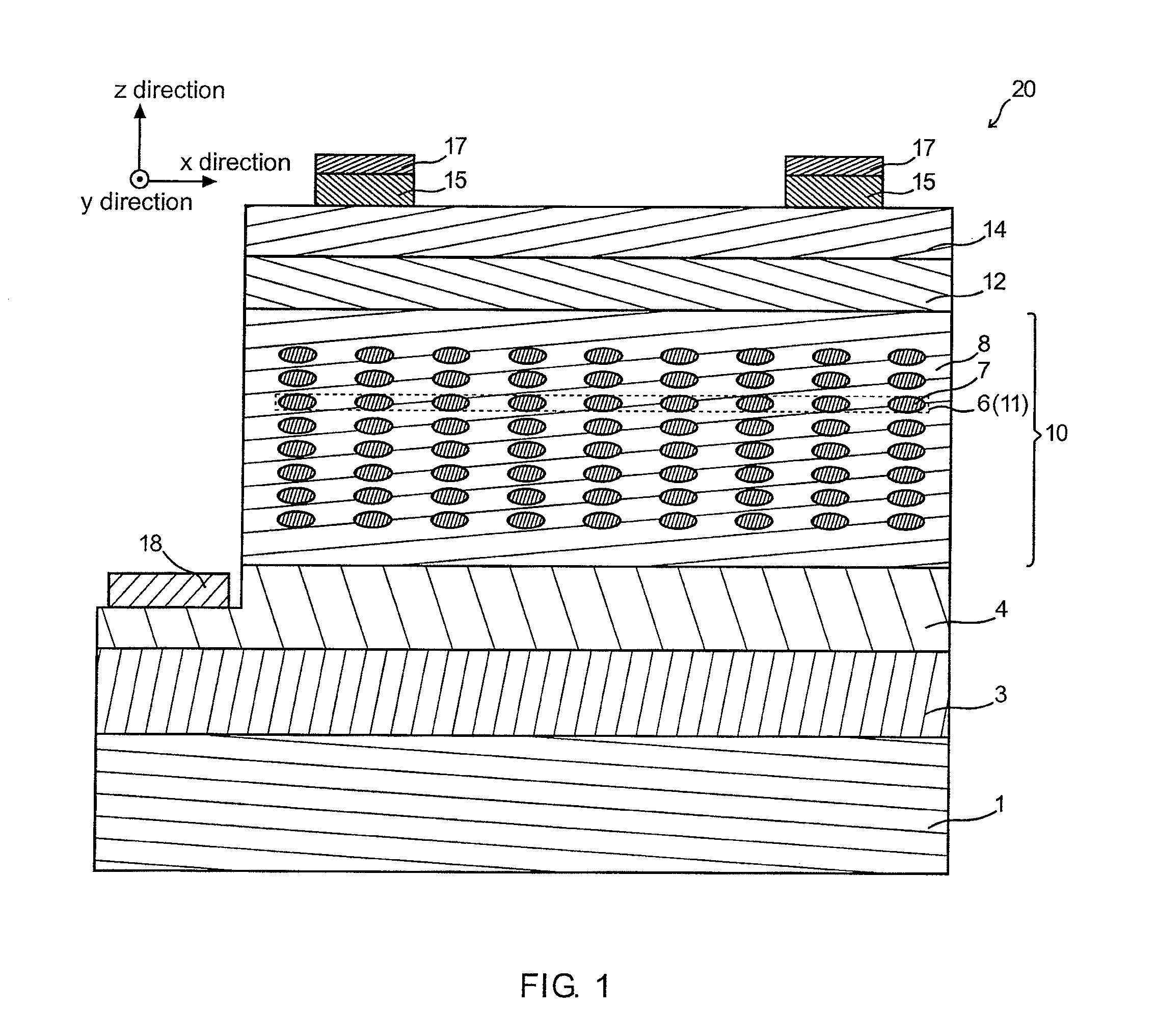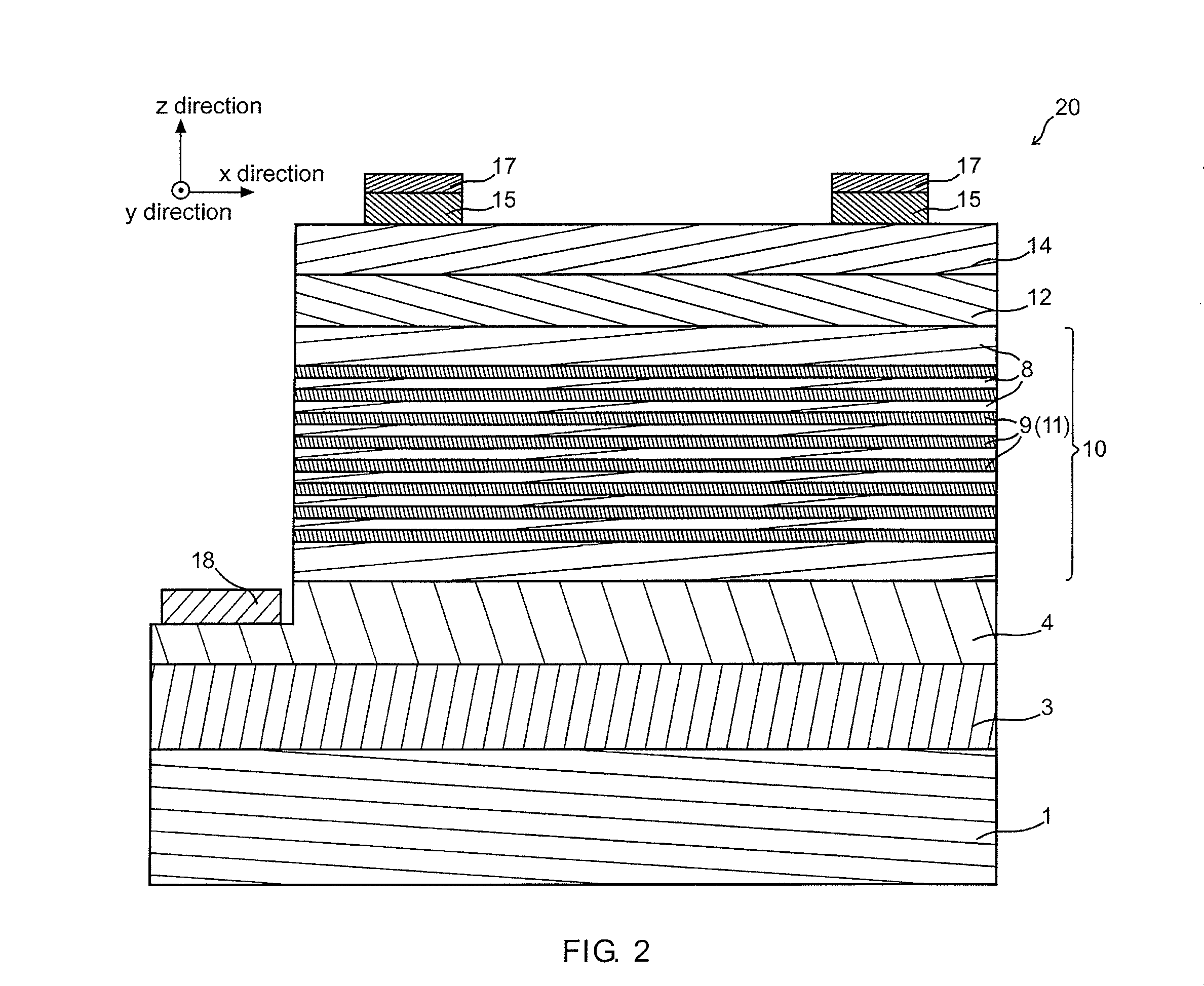Solar cell
a solar cell and cell technology, applied in the field of solar cells, can solve the problems of insufficient energy conversion efficiency and approaching the theoretical limit of shockle-quisser, and achieve the effect of further heightened incident photon-to-current conversion efficiency
- Summary
- Abstract
- Description
- Claims
- Application Information
AI Technical Summary
Benefits of technology
Problems solved by technology
Method used
Image
Examples
experiment 1
Simulation Experiment 1
[Experiment 1]
[0147]A simulation experiment was carried out by using a detailed balance model, so that the energy conversion efficiency was calculated. In order to describe this calculating method, band diagrams are shown in FIGS. 3 and 4. In this simulation experiment, the quantum dot layer was used as the quantum layer.
[0148]FIG. 3 is a band diagram of a superlattice semiconductor layer, which has four intermediate energy levels (the intermediate bands) and is included in the solar cell (6-levels intermediate-band solar cell) according to one embodiment of the present invention, and is an explanatory diagram describing a positional relationship of six levels.
[0149]FIG. 4 is a band diagram of the superlattice semiconductor layer, which has the four intermediate energy levels and is included in the solar cell (6-levels intermediate-band solar cell) according to one embodiment of the present invention, and is an explanatory diagram describing a relationship bet...
experiment 2
Simulation Experiment 2
[0214]A simulation experiment is further conducted on the superlattice semiconductor layer, which has the energy levels and is included in the solar cell (the 4 to 6-levels intermediate-band solar cell: referred also as a multi-level intermediate-band solar cell) shown in the experiments 1 to 3, with an attention being paid to a specific structure.
[0215]The Schrodinger equation is solved by using MATLAB software, and a band structure is calculated. In this simulation experiment, as a structure that can realize the multi-level intermediate-band solar cell, an attention is paid to “a structure where the valence band offset is 0” and “a structure where the valence band offset is not 0”. A shape of the quantum dot is considered as a cube, and a size of three sides are (x nm, y nm, z nm).
experiment 4
[Experiment 4]
[0216]A band structure is calculated in the intermediate-band solar cell having a structure where the valence band offset is 0.
[0217]In the superlattice semiconductor layer having the superlattice structure where the barrier layers made of AlSb and the quantum dot layers made of the quantum dots of InAs1-xSbx are stacked repeatedly, a difference between the energy level at the top of the valence band in the barrier layer and the energy level at the top of the valence band in the material (bulk) composing the quantum dots can be set to 0, and the valence band offset can be 0 (the valence band offset is such that a difference in the energy level of the top of the valence band between InAsxSb1-x and AlSb is 0). Since the electrons of InAs1-xSbx are quantum confined in AlSb at a point Γ, the band structures of InAs1-xSbx and AlSb at the point Γ are considered. The following calculation is made under a condition that x=0.3 according to the Vegard's law. The band gap of AlSb...
PUM
 Login to View More
Login to View More Abstract
Description
Claims
Application Information
 Login to View More
Login to View More - R&D
- Intellectual Property
- Life Sciences
- Materials
- Tech Scout
- Unparalleled Data Quality
- Higher Quality Content
- 60% Fewer Hallucinations
Browse by: Latest US Patents, China's latest patents, Technical Efficacy Thesaurus, Application Domain, Technology Topic, Popular Technical Reports.
© 2025 PatSnap. All rights reserved.Legal|Privacy policy|Modern Slavery Act Transparency Statement|Sitemap|About US| Contact US: help@patsnap.com



